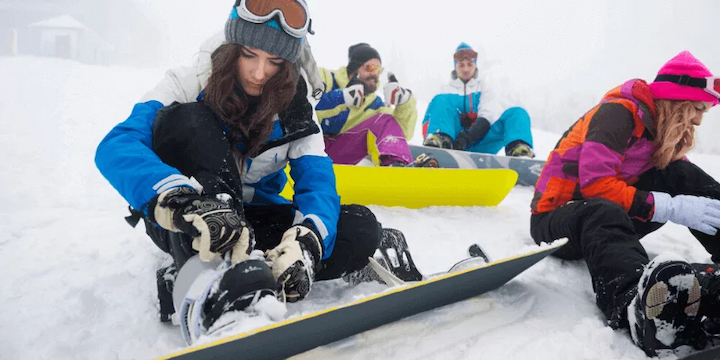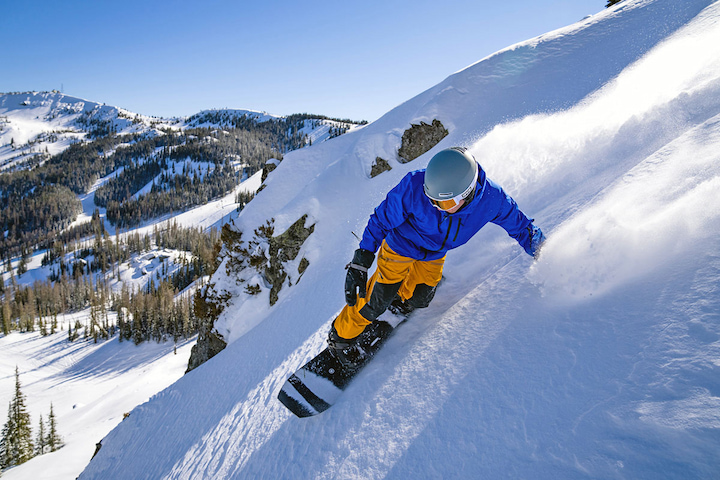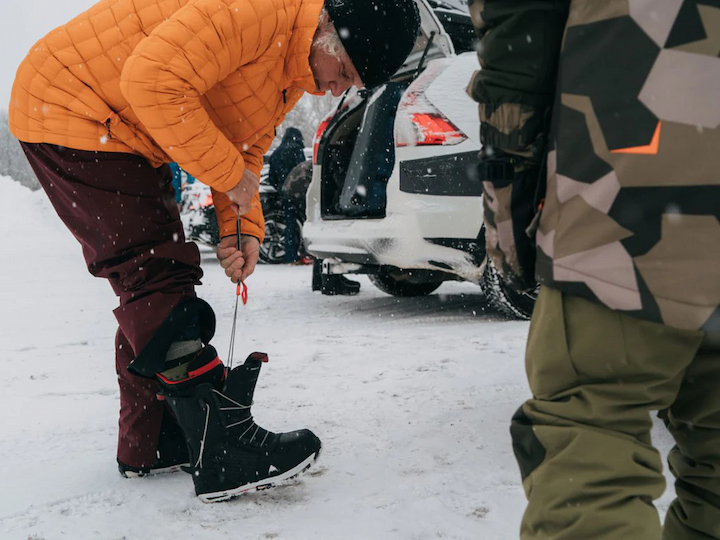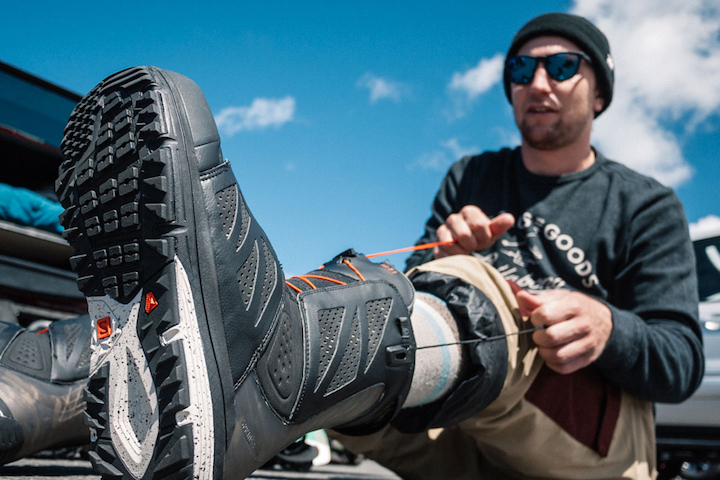When preparing your board-boots-binding setup, snowboarding boots are an important part to consider. You want boots that will fit you comfortably so you can move on to choosing bindings and creating an excellent match. Your boots is where you should splurge a little if you can afford to do so to make sure you buy the right model and fit.
The snowboarding boots you choose should match well with your usual riding style and the snow conditions you most frequently adventure in. Here are the most common boot variables to consider:
- Boot flex and riding style
- The lacing system
- Liners and footbeds
- Comfort and fit
Snowboard Boot Flex and Riding Style
When buying snowboarding boots for women and men, your goal should be to find a pair that’s designed to optimally perform where and how you usually ride. Snowboard boots usually come in a wide range of flexibilities, from soft to stiff. When it comes to boot flex, it is usually a personal preference, however, it does align roughly with the type of snowboarding you usually do.

Boot Flex
Finding snowboarding boots for women and men with a flex that ideally matches your riding style can make a world of difference in your overall experience. Snowboard boots can be categorized as soft, medium or stiff.
Soft flex: Soft-flexing snowboard boots are made from comfortable, resilient materials that are easy on your feet when you’re spending long days on the mountain.
Medium flex: Boots with a medium flex will provide a balance of mobility and excellent support for all-mountain performance and comfort.
Stiff flex: Stiff-flexing boots provide maximum support for edge power and control at high speeds and in rough skiing conditions.
Riding Style
Before investing in a pair of men’s or womens snowboarding boots, consider your riding style. Is it all-mountain? Freeride? Freestyle?
For example, an all-mountain or freeride boarder who likes to go fast will likely benefit more from highly responsive boots, which tend to be stiffer models. Recreational snowboarders and park riders typically prefer something that’s softer and easier to maneuver.

What category of rider are you?
All-mountain: This one refers to any terrain that’s suitable for a snowboard – groomers, untracked powder and even some park-and-pipe. Most riders are all-mountain riders, and most all-mountain riders prefer more flexible boots. Beginners should almost always go for softer boots. For fast riding, however, pick stiffer boots, this includes backcountry split boarding too.
Freeride: This includes off-piste terrain and some groomed runs, but excludes terrain parks. Freeriding is also known as “big mountain” riding. People practising this type of riding put great importance on speed and precision which is why they prefer stiffer boots.
Freestyle: Fun-focused terrain (half-pipe, rails, jumps, spins, jibbing and tricks). Some of the most important factors for this type of riding are feel, maneuverability and quick responses, which is why softer, more flexible boots are the best choice.
Snowboard Boot Lacing Systems
The lacing system of snowboard boots is a very important part. Your boots should be properly laced; they should be laced tightly yet feel comfortable and not have pressure points that can cause blisters. Your heels and ankles must remain securely in place, with minimal heel-lift, if possible.

Most snowboard boots come with one of three lacing systems – traditional, quick-pull or Boa. Some models of boots have a hybrid design that incorporates 2 of these systems. However, each system is fast, convenient and secure. The one you choose will mostly come down to your personal preferences and budget.
Traditional Laces
Traditional laces are tried-and-tested and foolproof. On some boot models, you can replace the stock laces with a designer or specialty laces.
Pros:
- You can customise by hand the tightness of the fit
- They are not expensive
- You can easily spot their replacement laces
Cons:
- Hard to tie while you’re wearing gloves or when your bare hands are cold
- Vulnerable to unintended loosening
Quick-Pull Laces
This single-pull lacing system is easy to do, fast and accommodates zonal tightening. This means that you can fine-tune the tightness of the forefoot lacing independently from the ankle and lower leg.

Pros:
- Fast and convenient to do
- You can tighten them while wearing gloves
- The lace pulls can be tucked away neatly
- Several systems offer independent high-low (ankle-foot) laces for a customisable fit
Cons:
- Might appear complex to do
- Some riders cannot exert enough pull to tighten laces as snugly as they prefer
- The points where laces attach to boots can sometimes create pressure points
- Somewhat vulnerable to unintended loosening.
- If lace wears out or breaks, it could end your day of riding
Boa System
The Boa system involves the use of small-diameter cables (these are usually small strands of stainless steel) that are attached to one or two knurled wheels or dials that help adjust the snugness of the fit. If two dials are used, one is on the top of the tongue of the boot and the other one is close to the ankle. The Boa system allows a very precise fit around the foot and lower leg.
Pros:
- Fast, easy to use and very convenient
- It can be done with just one hand
- It’s easy and simple to modify
- You can adjust it while wearing gloves
- Provides a precise and fine-tuned fit
- Great for shedding grit and slop.
Cons:
- This system applies uniform snugness throughout the entire foot, which means the lower and upper foot parts can’t be independently customised
- The points can sometimes create pressure points
- If a strand breaks, it will probably end your day of riding
- A more expensive system that adds to the boots’ overall cost.